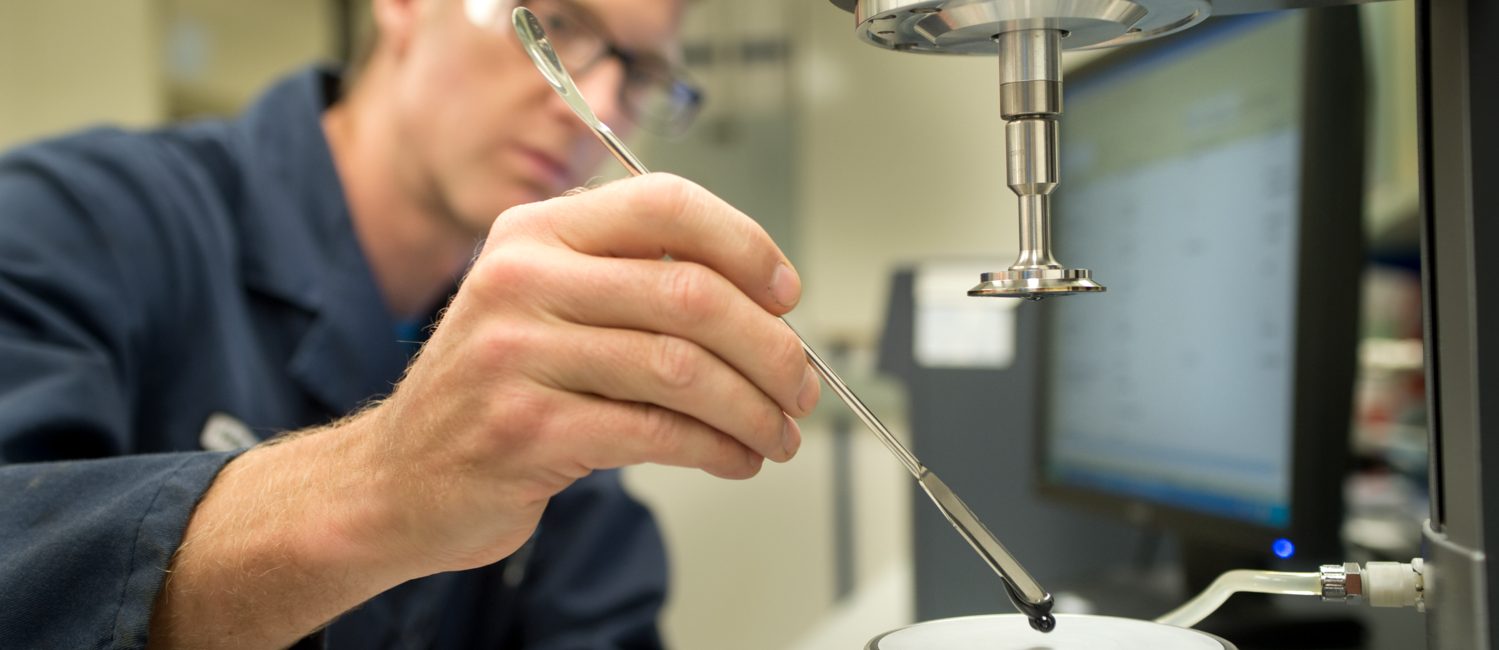


InnoTech Alberta has good capabilities for Rheology — the science of flow and deformation of matter when a force is applied. It is applicable to all type of materials —solids, semi-solids, slurries, emulsions (oil-water mixtures), and pure liquids. Rheology is used to describe the consistency of materials normally by viscosity and elasticity measurements. This technique can be applied to a matter in bulk state or to a liquid interface (such as o/w or w/o emulsion).
Besides Rheology, we also have the capability to measure Interfacial Properties of o/w and w/o emulsions. The capabilities allow us to understand how two immiscible liquids or liquids and solid surfaces interact through surface and interfacial tensions, droplet sizes, drop electrical charges (zeta potentials), oil and aqueous phase conductivities, contact angles, kinetics of phase separation (flocculation and coalescence), dispersed phase contents and turbidity.
Viscoelastic materials display a behaviour that lies between that of liquids and solids. While viscosity measures the resistance to flow, elasticity measures the flexibility due to microstructures that exist within fluids. In nature, materials such as polymers, emulsions and slurries may display both viscosity and elastic properties. Common examples of viscoelastic materials are mayonnaise, ketchup and produced oil-water mixtures produced from oilsands which are significantly different from pure oil and water phases.
Rheology can tell us how easy or difficult is it to flow an oil through a pipeline, or how difficult will it be to separate oil and water phases from emulsions produced from SAGD operations or oilsands processing, information we routinely utilize to improve processes or to develop new ones. Rheology is also an important tool in development of new liquid coatings for machines, equipments and pipelines, and in new foods and beverage development.
By studying interfacial properties of fluids, we develop processes to separate oil and water, or understand why emulsions form in first place. Interfacial properties that can be measured in house are surface tension, interfacial tension, surface charge, drop/particle sizes and size distributions, electrical conductivity, coalescence and flocculation kinetics, interfacial viscosity, surface wettability, contact angles on fibres/powders, and planar surfaces.
We also have the capability to examine/visualize emulsions through high-definition microscopes and determine drop sizes and drop size distributions. For solid materials we have SEM facility which allows for material topography and surface structures to be studied using an electron beam.
To conduct our rheology work we have several pieces of equipment and methods available in our laboratory that we routinely utilize to study emulsions and other liquids and semi-solid soft matter. The equipments and methods are listed below: